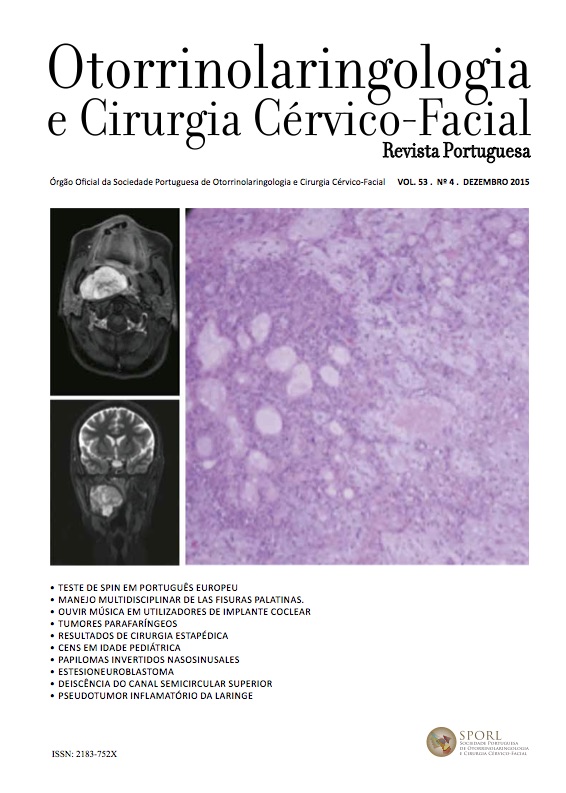Esthesioneuroblastoma: IPOLFG 15 Years Experience
DOI:
https://doi.org/10.34631/sporl.338Keywords:
Esthesioneuroblastoma, modified Kadish staging systemAbstract
Objective: The aim of this study is to analyze clinicopathological findings, treatment and outcomes of esthesioneuroblastoma.
Material and methods: We performed a retrospective review of 18 consecutive patients with ENB diagnosis treated in a cancer reference center between 1999 and 2014.
Results: The mean age was 56 years old and 61% patients were female. According to the modified Kadish staging system, there were 5 stage B patients, 12 stage C patients and 1 stage D patient. Twelve patients were initially treated with surgery and adjuvant radiotherapy, 2 with surgery and adjuvant chemoradiotherapy, 3 with radiotherapy alone (1 of them palliative) and 1 with chemotherapy alone (palliative). The Kaplan Meier analysis estimated a survival of 76% at two years follow-up and 59% at five years follow-up.
Conclusions: In this study, patients with less advanced Kadish stage or who underwent surgery had a greater disease-free survival.
Downloads
References
Spiro JD, Soo KC, Spiro RH. Nonsquamous cell malignant neoplasms of the nasal cavities and paranasal sinuses. Head Neck. 1995 Mar-Apr;17(2):114-8.
Somenek M. Esthesioneuroblastoma. Medscape. Apr 2015.
Deniz T, Ozcan Y, Fatih S et al., “Olfactory Neuroblastomas: An Experience of 24 Years,” ISRN Oncology, vol. 2011, Article ID 451086, 7 pages, 2011. doi:10.5402/2011/451086.
Modesto A, Blanchard P, Tao YG, Rives M, Janot F, Serrano E, Benlyazid A, Guigay J, Ferrand FR, Delord JP, Bourhis J, Daly-Schveitzer N. Multimodal treatment and long-term outcome of patients with esthesioneuroblastoma. Oral Oncol. 2013 Aug;49(8):830-4. doi: 10.1016/j.oraloncology.2013.04.013. Epub 2013 Jun 5.
Eich HT, Hero B, Staar S, Micke O, Seegenschmiedt H, Mattke A, Berthold F, Müller RP. Multimodality therapy including radiotherapy and chemotherapy improves event-free survival in stage C esthesioneuroblastoma. Strahlenther Onkol. 2003 Apr;179(4):233-40.
El Kababri M, Habrand JL, Valteau-Couanet D, Gaspar N, Dufour C, Oberlin O. Esthesioneuroblastoma in children and adolescent: experience on 11 cases with literature review. J Pediatr Hematol Oncol. 2014 Mar;36(2):91-5. doi:10.1097/MPH.0000000000000095.
Dulguerov P, Allal AS, Calcaterra TC. Esthesioneuroblastoma: a meta-analysis and review. Lancet Oncol. 2001 Nov;2(11):683-90.






